* (restored/expanded)
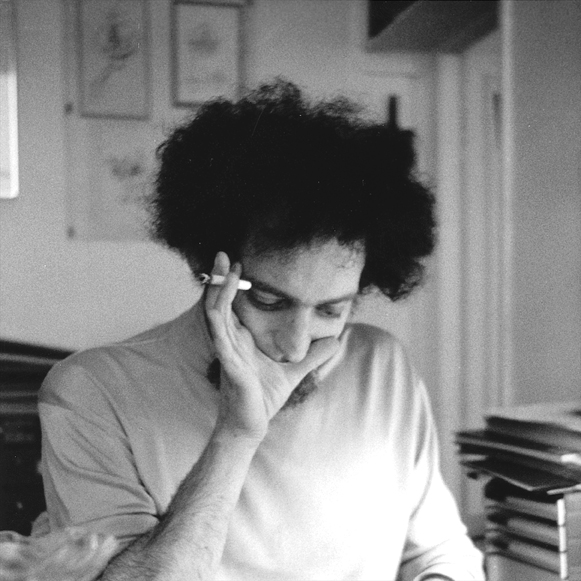
‘Georges Perec was born, the only son of Icek Judko and Cyrla (Schulewicz) Peretz – Polish Jews who had emigrated to France in the 1920s – in a working-class district of Paris. Perec’s father, who enlisted in the French Army during World War II, died in 1940 from unattended gunfire or shrapnel wounds, and Perec’s mother perished in the Nazi Holocaust, probably in Auschwitz. Perec was taken into the care of his paternal aunt and uncle in 1942, and in 1945 he was formally adopted by them.

‘He started writing reviews and essays for La Nouvelle Revue Française and Les Lettres Nouvelles, prominent literary publications, while studying history and sociology at the Sorbonne. In 1961, Perec began working at the Neurophysiological Research Laboratory attached to the Hôpital Saint-Antoine as an archivist, a low-paid position which he retained until 1978. A few reviewers have noted that the daily handling of records and variegated data may have had an influence on his literary style. Perec’s other major influence was the Oulipo, which he joined in 1967, meeting Raymond Queneau, among others. Perec dedicated his masterpiece, La Vie mode d’emploi (Life: A User’s Manual) to Queneau, who died before it was published.
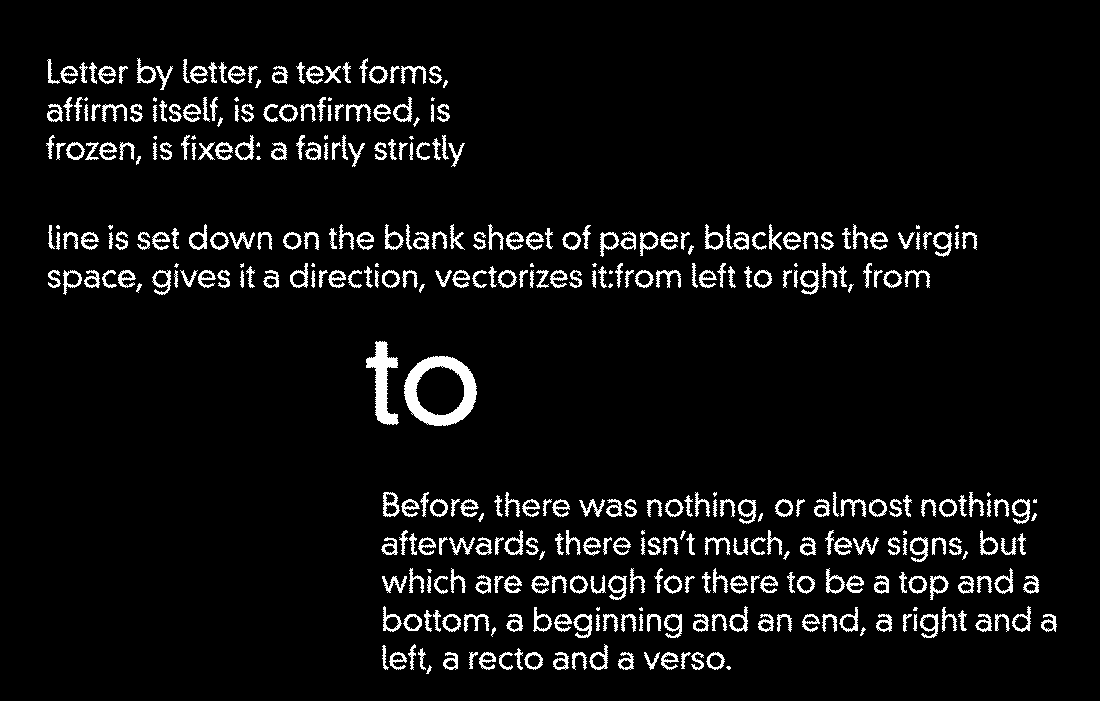
‘La Vie mode d’emploi (1978) brought Perec some financial and critical success – it won the Prix Médicis – and allowed him to turn to writing full-time. He was a writer in residence at the University of Queensland, Australia in 1981, during which time he worked on the unfinished 53 Jours (53 Days). Shortly after his return from Australia, his health deteriorated. A heavy smoker, he was diagnosed with lung cancer. He died the following year, only forty-five years old.
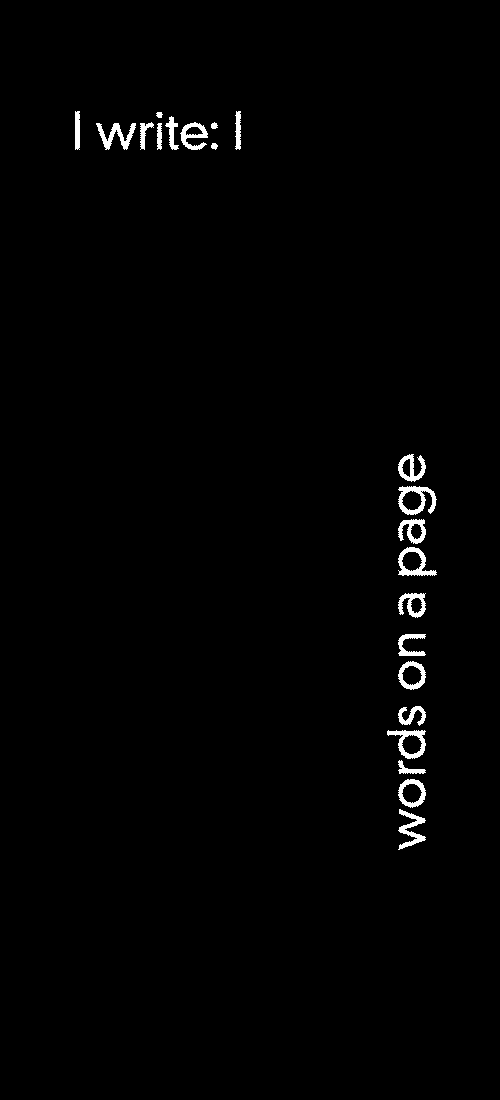
‘The Association Georges Perec was founded in 1982 in order to promote the work of Georges Perec internationally and to establish public archives. The Perec archives in Paris have almost all editions of Perec’s work published both in France and abroad, as well as a weath of secondary literature on the author. The association is open to visits once a week in the Arsenal library. It organises a monthly seminar at Paris VII Jussieu university where researchers present papers on Perec. It also publishes its own biannual Bulletin Georges Perec with details of the latest editions and secondary literature published worldwide, and the Cahiers Georges Perec with articles on Perec’s work.’ — collaged
____________
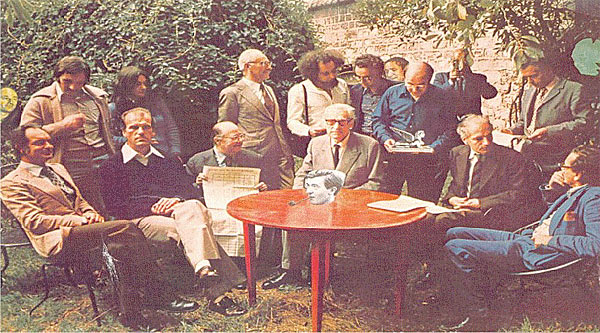
Georges Perec, Oulibiographer
by Bernard Magne
‘There are facts: Georges Perec has been a member of the Oulipo since March 1967.
‘There are photographs: in the group’s “official” photo, taken in 1975, Georges Perec occupies the eleventh position from the right (counting the head of André Blavier on the table).
‘There are rules: despite his death on March 3, 1982, Georges Perec is still a member of the Oulipo—which, as we know, makes no distinction between living members and deceased ones.
‘There are statistics: “I consider myself a genuine product of the Oulipo. My existence as a writer is 90% dependent on my knowing the Oulipo at a pivotal point in my formation, in my literary work,” Perec has declared.
‘There are tributes: pen in hand, Oulipians remember Georges Perec each week.
‘There are pilgrimages: pen still in hand, Oulipians make their own attempts to exhaust Parisian locations.
‘There is, above all, the complexity of a body of work so rich and so diverse that it seems impossible to reduce to a label—whether grandiose or grassroots is anyone’s guess.’
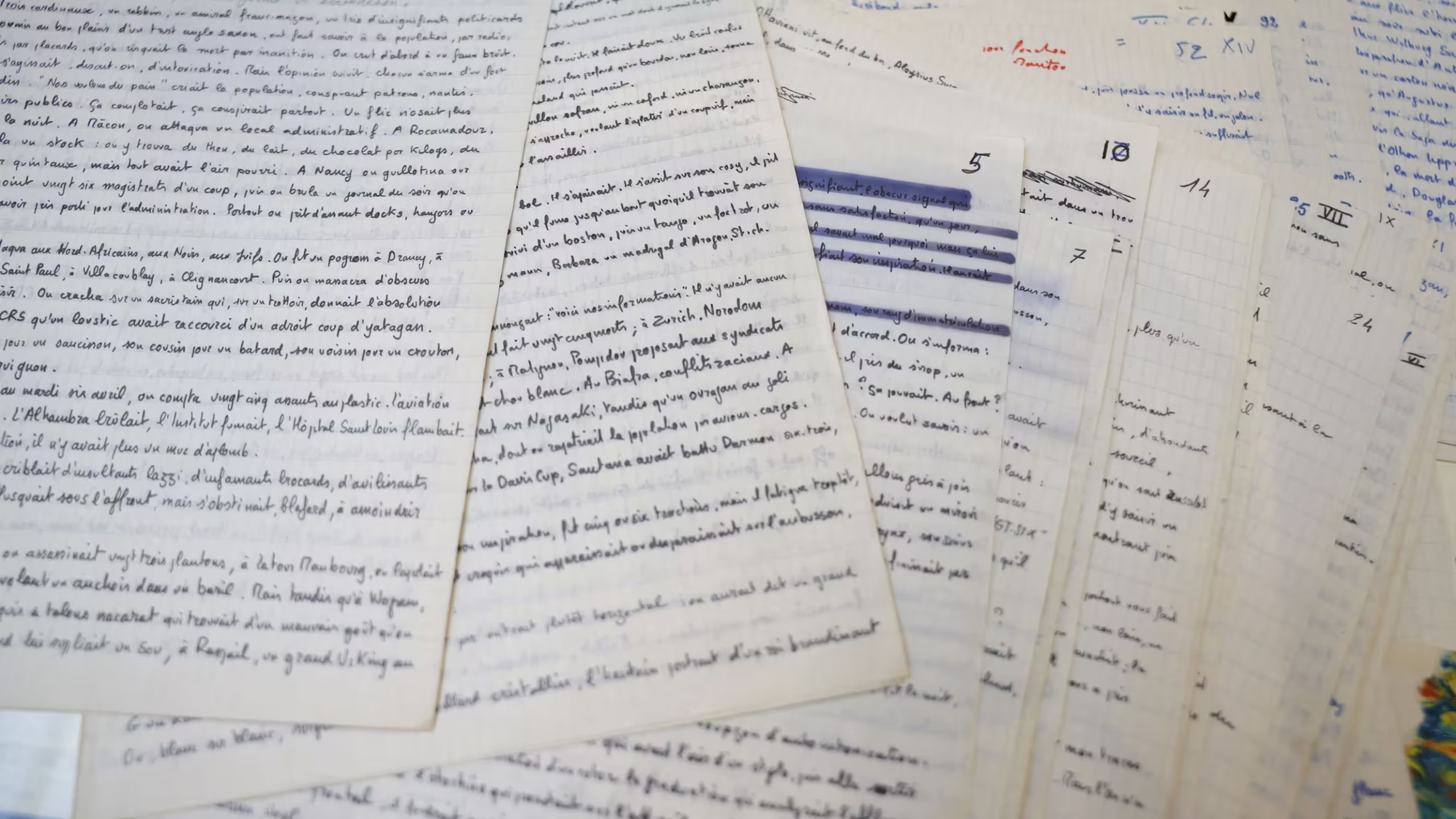
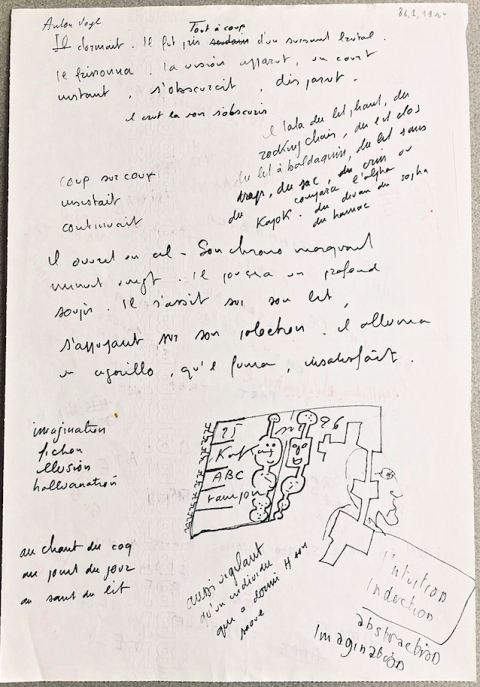
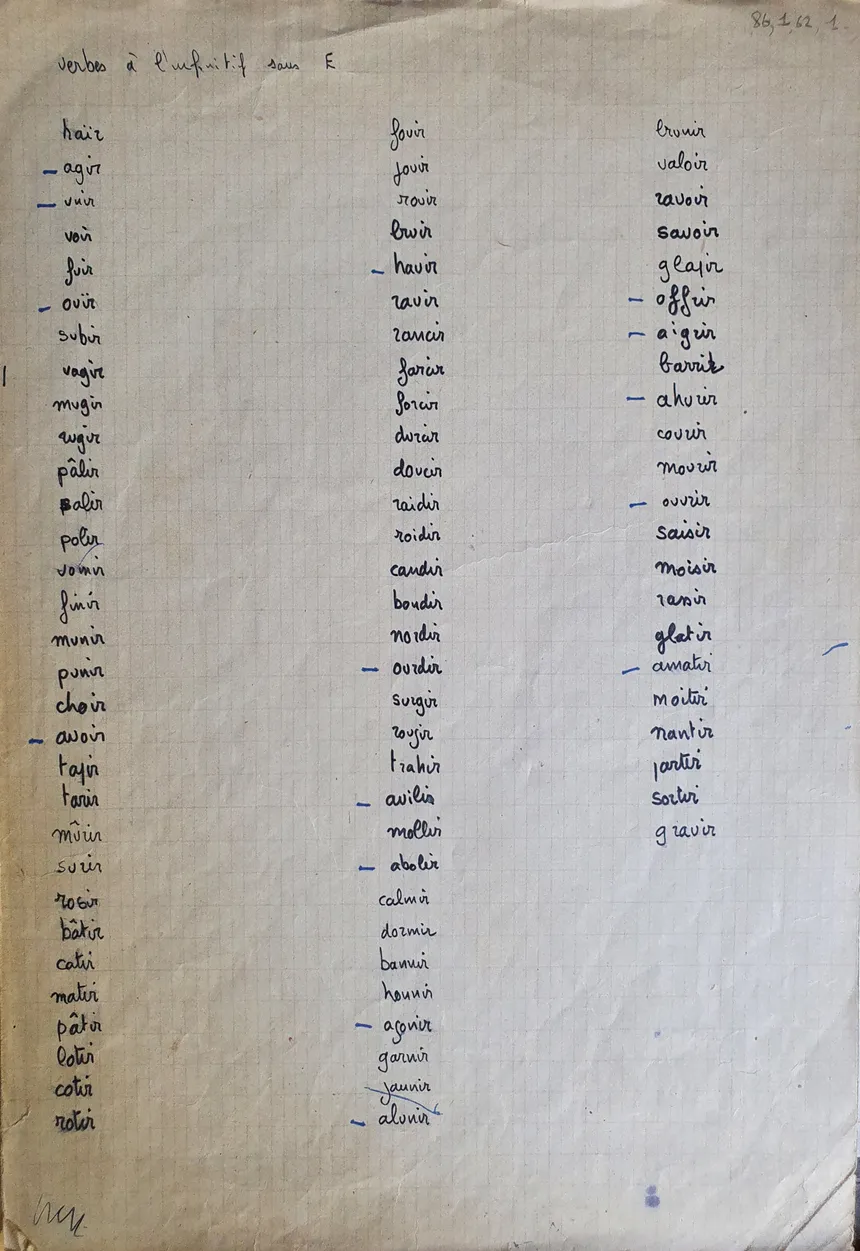
____________
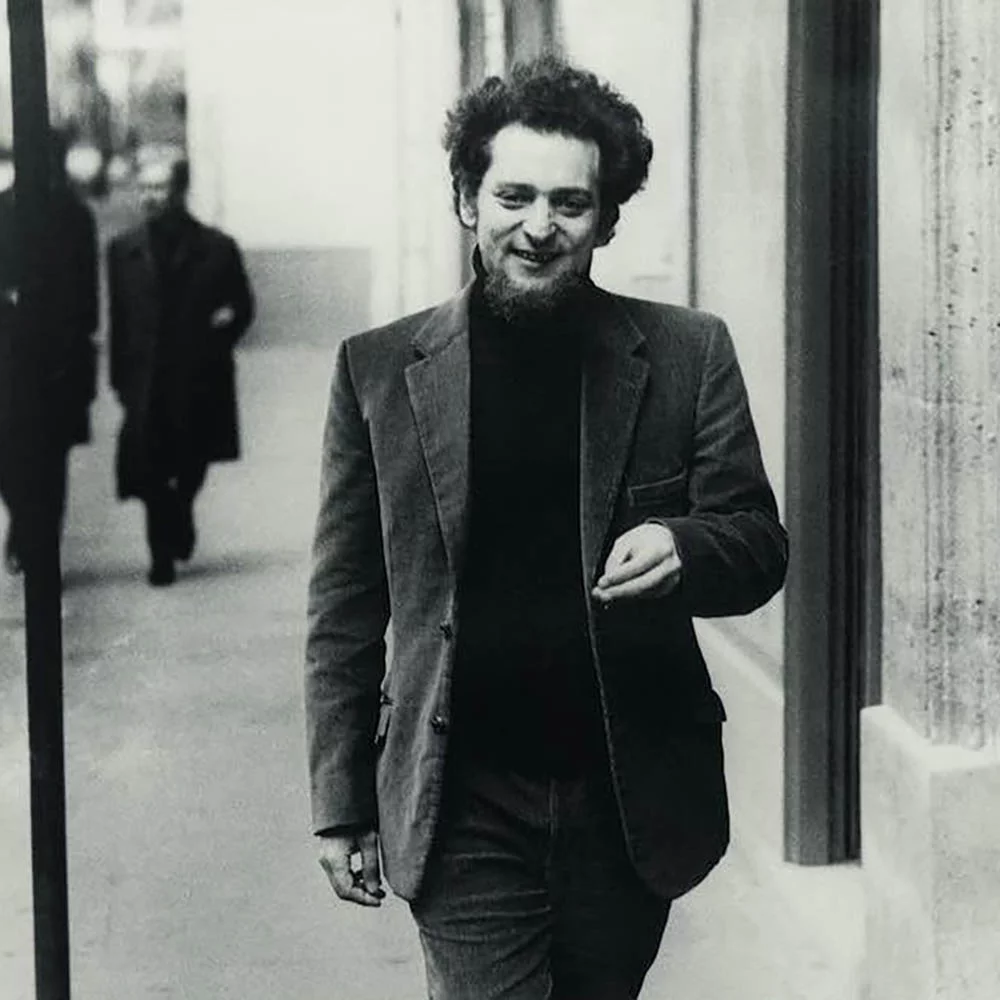
The Infra-Ordinary
In an essay written in 1973 (“Approches de quoi?” “Approaches to What?”), Georges Perec coined the term “l’infra-ordinaire” (the infra-ordinary) for those minimal aspects of reality which he hoped to zero in on. Perec asks himself: “What is the real in people’s life, what is the real in people’s consciousness? What real still belongs to them?” For him, the real is not what merits inclusion in History, but instead what is likely to be forgotten, what is fleeting, inconsequential. The anthropologist’s task is to rescue things from their opacity: “what we call quotidian is not evidence, but opacity” – writes Perec – “a kind of blindness, a sort of anesthesia.” In order to free oneself from such blindness, phenomenologists prescribe the bracketing of the world as a necessary precondition to understanding. Similarly, Perec’s first step is to detach himself from contingency, yet for him the process of bracketing focuses on what is the narrative material for other writers or journalists, evidence itself. He will scrupulously avoid any “interesting” detail; instead he will launch himself into a diligent analysis of the most trivial aspects of the here and now:
‘What happens everyday, the banal, the quotidian, the evident, the common, the ordinary, the infra-ordinary, the background noise, the habitual; how can one account for it, how can one question it, how can one describe it?’
‘Trains begin to exist only when they are derailed, the more passengers are dead, the more trains exist; planes have access to existence only when they are hijacked; the only meaningful destiny for cars is crashing into a sycamore: fifty-two weekends per year, fifty-two totals; so many dead and all the better for the news if the figures keep increasing! […] In our haste to measure the historic, the meaningful, the revealing, we leave aside the essential.’
‘What really happens, what we live, all the rest, where is it?’
‘It is of no importance to me that these questions here are fragmentary and simply hint at a method, or, at the most, a project. It is of great importance to me, on the contrary, that these questions appear to be futile and trivial: it is precisely that which makes them as essential as, if not more essential than, so many other questions through which we have vainly tried to capture our truth.’
— taken from The Ali Baba Project
— Read Perec’s full essay ‘The Infra-Ordinary’ here.
____________

Georges Perec Thoughts on the Art and Technique of Crossing Words
‘The construction of a crossword consists of two operations that are quite different and in the end perfectly independent of each other: the first is the filling of the diagram; the second is the search for definitions.
‘The filling of the diagram is a tedious, meticulous, maniacal task, a sort of letter-based arithmetic where all that matters is that words have this or that length, and that their juxtapositions reveal groupings that are compatible with the perpendicular construction of other words; it is a system of primary constraints where the letter is omnipresent but language is absent. Contrariwise, the search for definitions is fluid, intangible work, a stroll in the land of words, intended to uncover, in the imprecise neighborhood that constitutes the definition of a word, the fragile and unique location where it will be simultaneously revealed and hidden. The two operations imply mental faculties that could almost seem contradictory: in the first, one proceeds by trial and error, starting over twenty or thirty times a grid that one always deems less than perfect; in the second, one favors intuition, fortuitous finds, sudden illumination; the first is done at one’s table, with obstinacy and tenacity, groping, counting, erasing; the other is rather done at any hour of day or night, without thinking about it, strolling, letting one’s attention float freely in the wake of the thousand and one associations evoked by this or that word. One can very well imagine—and one sees this sometimes—a crossword composed by two cruciverbalists, one of whom would supply the diagram, and the other the definitions. In any case, the two operations are almost always separate: one starts by constructing the diagram (generally starting from the first word across or down—which constitute what is called the gallows—chosen in advance because of a definition deemed felicitous), and it is once the diagram is completed that one starts to seek definitions of the other words it contains. Not only words, alas, but also groups of two, three, four letters, or even sometimes more, which, in spite of the author’s efforts, persist in not spontaneously offering any known meaning.’
(Read the entirety @ The Believer)
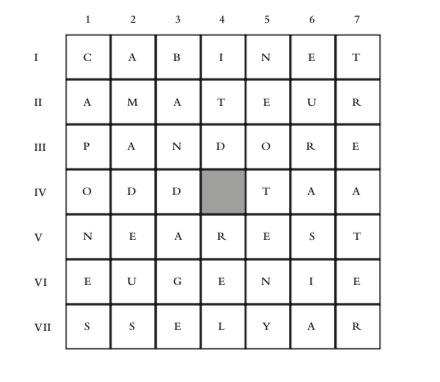
____________

Georges Perec’s 10×10 Knight’s Tour
‘The following 10×10 Knight’s Tour was used by Georges Perec to descibe the rooms of a Paris apartment building in his masterpiece: Life: A User’s Manual.

‘Perec: “it would have been tedious to describe the building floor by floor and apartment by apartment; but that was no reason to leave the chapter sequence to chance. So I decided to use a principle derived from an old problem well known to chess enthusiasts as the Knight’s tour; it requires moving a knight around the 64 squares of a chess-board without its ever landing more than once on the same square… For the special case of Life A User’s Manual, a solution for a 10 x 10 chess-board had to be found… The division of the book into six parts was derived from the same principle: each time the knight has finished touching all four sides of the square, a new section begins”
‘Perec’s 10×10 Knight’s tour is reproduced below. Notice that the tour is not accurate, because of the incorrect knight move between squares 65 and 66. A more accurate knight’s tour can be seen further below.’
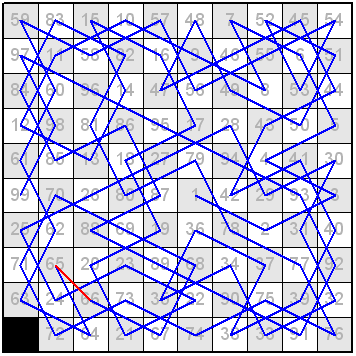
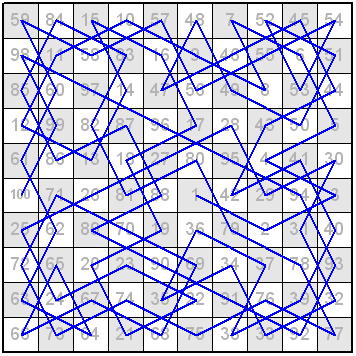
— taken from The Borders Chess Club Website
____________
 Georges Perec A Void
Georges Perec A Void
‘A Void (La Disparition) is a novel in the form of a lipogram in which the letter e does not appear. In English this deprives one of an essential article (“the”) and about two thirds of the words in the language; in French it is even worse, leaving one with about an eighth of the lexicon. My initial feeling was that this was a gimmick which might be amusing in a poem or a short story but which must surely be ridiculous in a novel, but I soon realised I was wrong.’
Excerpt: ‘Noon rings out. A wasp, making an ominous sound, a sound akin to a klaxon or a tocsin, flits about. Augustus, who has had a bad night, sits up blinking and purblind. Oh what was that word (is his thought) that ran through my brain all night, that idiotic word that, hard as I’d try to pun it down, was always just an inch or two out of my grasp – fowl or foul or Vow or Voyal? – a word which, by association, brought into play an incongruous mass and magma of nouns, idioms, slogans and sayings, a confusing, amorphous outpouring which I sought in vain to control or turn off but which wound around my mind a whirlwind of a cord, a whiplash of a cord, a cord that would split again and again, would knit again and again, of words without communication or any possibility of combination, words without pronunciation, signification or transcription but out of which, notwithstanding, was brought forth a flux, a continuous, compact and lucid flow: an intuition, a vacillating frisson of illumination as if caught in a flash of lightning or in a mist abruptly rising to unshroud an obvious sign – but a sign, alas, that would last an instant only to vanish for good.’
— Read ‘Anton Vowl,’ the first chapter of Perec’s A Void, here.
____________

Georges Perec and classification
Oct 23rd, 2006 by maxine
from LibraryThing’s ideas blog
‘The brilliant, eclectic French writer Georges Perec is best known for his unconventional novel Life: A User’s Manual. Others may know him as the guy who wrote a novel, La disparition, without using a single e–which is at least as hard to pull off in French as it is in English—and followed it up with the shorter Les Revenentes, which used e as its only vowel! (La disparition was translated into English by Gilbert Adair as A Void; Les revenentes hasn’t been translated.) He wrote a 5,000 word palindrome—much harder to do before computers—and a fake paper on the “yelling effect” produced when a soprano is pelted with tomatoes.
‘What does any of this have to do with classification? Well, for much of his life Perec worked as a archivist and classifier for a scientific laboratory. He thought deeply about classification and its consequences, a topic which appears often in his essays and other (unclassifiable) short pieces, published in English as Species of Spaces. “Think/Classify” is (intentionally) an unordered grab bag of thoughts on the topic—Sei Shonagon’s lists, French place-names, the organization of the 1900 World’s Fair, his personal filing system, etc. “On the art…” aligns nicely with what Thingamabrarians say about what really happens when you try to put your books in order. Some choice bits:
“Disorder in a [personal] library is not serious in itself; it ranks with ‘Which drawer did I put my socks in?’ … Opposed to this apologia for the sympathetic disorder is the small-minded temptation toward an individual bureaucracy: one thing for each place and each place for its one thing, and vice versa. Between these two tensions, one which sets a premium on letting things be, on a good-natured anarchy, the other that exalts the virtues of the tabula rasa, the cold efficiency of the great arranging, one always ends by trying to set one’s book in order. This is a trying, depressing operation, but one liable to produce pleasant surprises, such as coming upon a book you had forgotten because you no longer see it and which, putting off until tomorrow what you won’t do today, you finally re-devour lying face down on your bed.”

“So very tempting to want to distribute the entire world in terms of a single code. A universal law would then regulate phenomena as a whole: two hemispheres, five continents, masculine and feminine, animal and vegetable, singular plural, right left, four seasons, five senses, six vowels, seven days, twelve months, twenty six letters. … Unfortunately, this doesn’t work, has never even begun to work, will never work. Which won’t stop us continuing for a long time to come to categorize this animal or that according to whether it has an odd number of toes or hollow horns.”
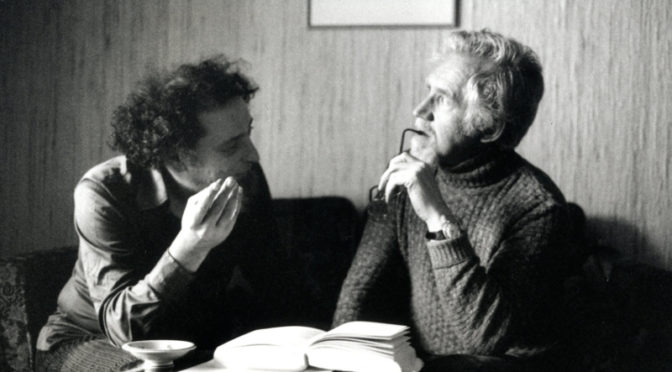
“Taxonomy can make your head spin. It does mine whenever my eyes light on an index of the Universal Decimal Classification (UDC). By what succession of miracles has agreement been reached, practically throughout the world, that 668.184.2.099 shall denote the finishing of toilet soap, and 629.1.018–465 horns on refuse vehicles; whereas 621.3.027.23, 621.436:382, 616.24—002.5—084, 796.54, and 913.15 denote respectively: tensions not exceeding 50 volts, the export trade in Diesel motors, the prophylaxy of tuberculosis, camping, and the ancient geography of Japan!’”
— taken from OWL’s (omnipresent Wisconsin librarian) Librarian’s Place Blog
____________

Georges Perec Métaux
R.L.D. [Robert et Lydie Dutrou], 1985; edition of 135
‘Robert Dutrou, one of the most important French printers, founded the RLD studio in 1973. In 1985 they published seven poems by Georges Perec: Métaux. The book contained seven engravings by Italian artist Paolo Boni. In addition to his well known novels, Perec wrote so-called ‘heterogrammatical’ poems, written with a limited number of letters: a, e, i, l, n, o, r, s, t, u, adding one other letter of the alphabet for each poem (the so-called ‘joker’). The author therefore uses a special alphabet of only 11 letters for these poems. The poem is presented in a square of 11 x 11 letters, in which the letters he uses may only appear once in each line and each column. For clarity’s sake, the poem is also presented in more traditional form, with the addition of punctuation marks, accents, spaces and blank lines. In 1976 Perec published 176 such poems under the title Alphabets. He changed his spelling rules for Métaux: these are seven poems for which he used a 14-letter alphabet: 12 regular letters (a, d, e, i, l, m, n, o, r, s, t, u) with one additional letter for each poem, and another ‘joker’ letter.’
— See sample pages from Métaux and read more about the book here.
____________

Three authors’ anagrammed versions of ‘Vocalisations’ by Georges Perec
‘These are all simultaneous anagrams and approximate English translations of Vocalisations by George Perec, a lipogrammatic rendering of Rimbaud’s poem Voyelles omitting the letter E. Note that this constraint is present at two levels: the poem elides the parts of Rimbaud’s original that talk about E, as well as avoiding the letter itself.’
Vocalisations
A noir, (Un blanc), I roux, U safran, O azur:
Nous saurons au jour dit ta vocalisation:
A, noir carcan poilu d’un scintillant morpion
Qui bombinait autour d’un nidoral impur,
Caps obscurs; qui, cristal du brouillard ou du Khan,
Harpons du fjord hautain, Rois Blancs, frissons d’anis?
I, carmins, sang vomi, riant ainsi qu’un lis
Dans un courroux ou dans un alcahool mortifiant;
U, scintillations, rond divins du flot marin,
Paix du pâtis tissu d’animaux, paix du fin
Sillon qu’un fol savoir aux grands fronts imprima;
O, finitif clairon aux accords d’aiguisoir,
Soupirs ahurissant Nadir ou Nirvâna:
O l’omicron, rayon violin dans son Voir!
Read the authors’ anagrammations here.
— taken from The Anagrammy Awards Home Page
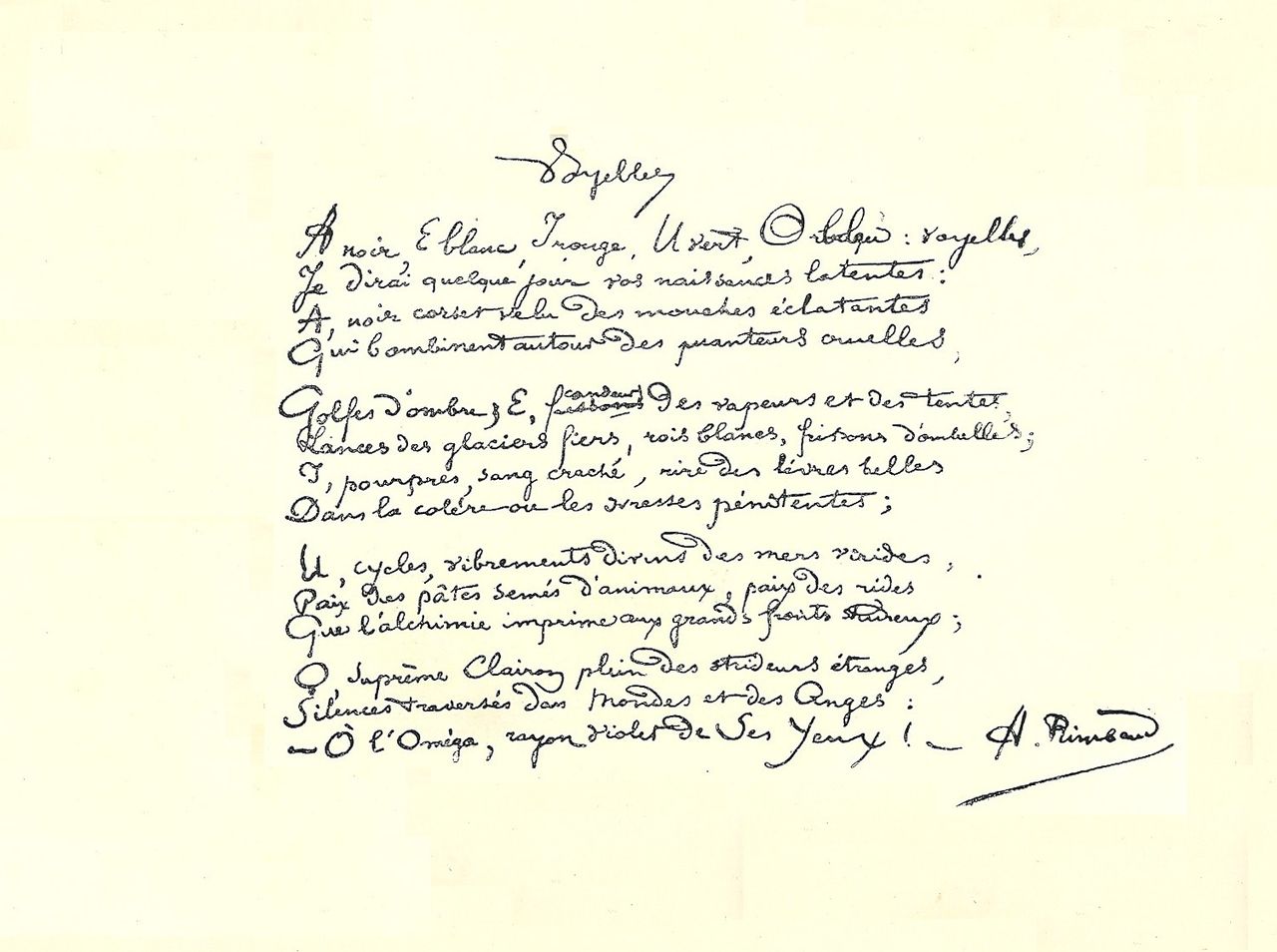
________________

from Georges Perec’s History of the Lipogram
‘Littré defines the lipogram as “a work in which one affects to exclude a particular letter of the alphabet”; Larousse says, more precisely: “literary work in which one compels oneself strictly to exclude one or several letters of the alphabet”. An appreciation of the nuance between “one affects” and “one compels oneself” might have constituted one of the purposes of this article….
‘Exclusively preoccupied with its great capitals (Work, Style, Inspiration, World-Vision, Fundamental Options, Genius, Creation, etc.), literary history seems deliberately to ignore writing as practice, as work, as play. Systematic artifices, formal mannerisms (that which, in the final analysis, constitutes Rabelais, Sterne, Roussel…) are relegated to the registers of asylums for literary madmen, the “Curiosities”: “Amusing Library,” “Treasury of Singularities,” “Philological Entertainments,” “Literary Frivolities,” compilations of a maniacal erudition where rhetorical “exploits” are described with suspect complaisance, useless exaggeration, and cretinous ignorance. Constraints are treated therein as aberrations, as pathological monstrosities of language and of writing; the works resulting from them are not even worthy to be called “works”: locked away, once and for all and without appeal, and often by their authors themselves, these works, in their prowess and their skillfulness, remain paraliterary monsters justiciable only to a symptomology whose enumeration and classification order a dictionary of literary madness.
‘Without wishing to distinguish between that which, in writing, is madness, and that which is not (is platitude a form of wisdom?), one might at least recall that formal mannerisms have existed since time immemorial and not only, as some feign to believe, during so-called “decadent periods”: they have traversed all of Western literature (we shall not speak of the others here) and have left their trace on every genre….
‘We do not pretend that systematic artifices are identical to writing, but only that they constitute a dimension of writing which must not be ignored. Rather than harrying the ineffable to who knows where, shouldn’t we first examine the reasons for the persistence of the sonnet? And why should we forget that the most beautiful line of poetry in the French language is composed of monosyllables?…
‘…the suppression of the letter, of the typographical sign, of the basic prop, is a purer, more objective, more decisive operation [than suppressing a given word], something like constraint degree zero, after which everything becomes possible.’
— taken from Attempts: A reality-based blog by Stephen Frug
____________
 The system inside Georges Perec’s Life: A User’s Manual
The system inside Georges Perec’s Life: A User’s Manual
‘In keeping with Oulipo objectives, Perec created a complex system to construct the novel Life: A User’s Manual which would generate for each chapter a list of items, references or objects which that chapter should then contain or allude to. He described this system as a “machine for inspiring stories”. There are 42 lists of 10 objects each, gathered into 10 groups of 4 with the last two lists a special “Coupl
es” list. The way in which these apply to each chapter is governed by an array called a Graeco-Latin square. The lists are considered in pairs, and each pair is governed by one cell of the array, which guarantees that every combination of elements is encountered. For instance, the items in the couples list are seen once with their natural partner (in which case Perec gives an explicit reference), and once with every other element (where he is free to be cryptic). In the 1780s, the great mathematician Leonhard Euler had conjectured that a 10×10 Graeco-Latin square could not exist and it was not until 1959 that one was actually constructed, refuting Euler. To further complicate matters, the 38th and 39th list are named “Missing” and “False” and each list comprises the numbers 1 to 10. The number these lists give for each chapter indicates one of the 10 groups of 4 lists, and folds the system back on itself: one of the elements must be omitted, and one must be false in some way (an opposite, for example). Things become tricky when the Missing and False numbers refer to group 10, which includes the Missing and False lists.’
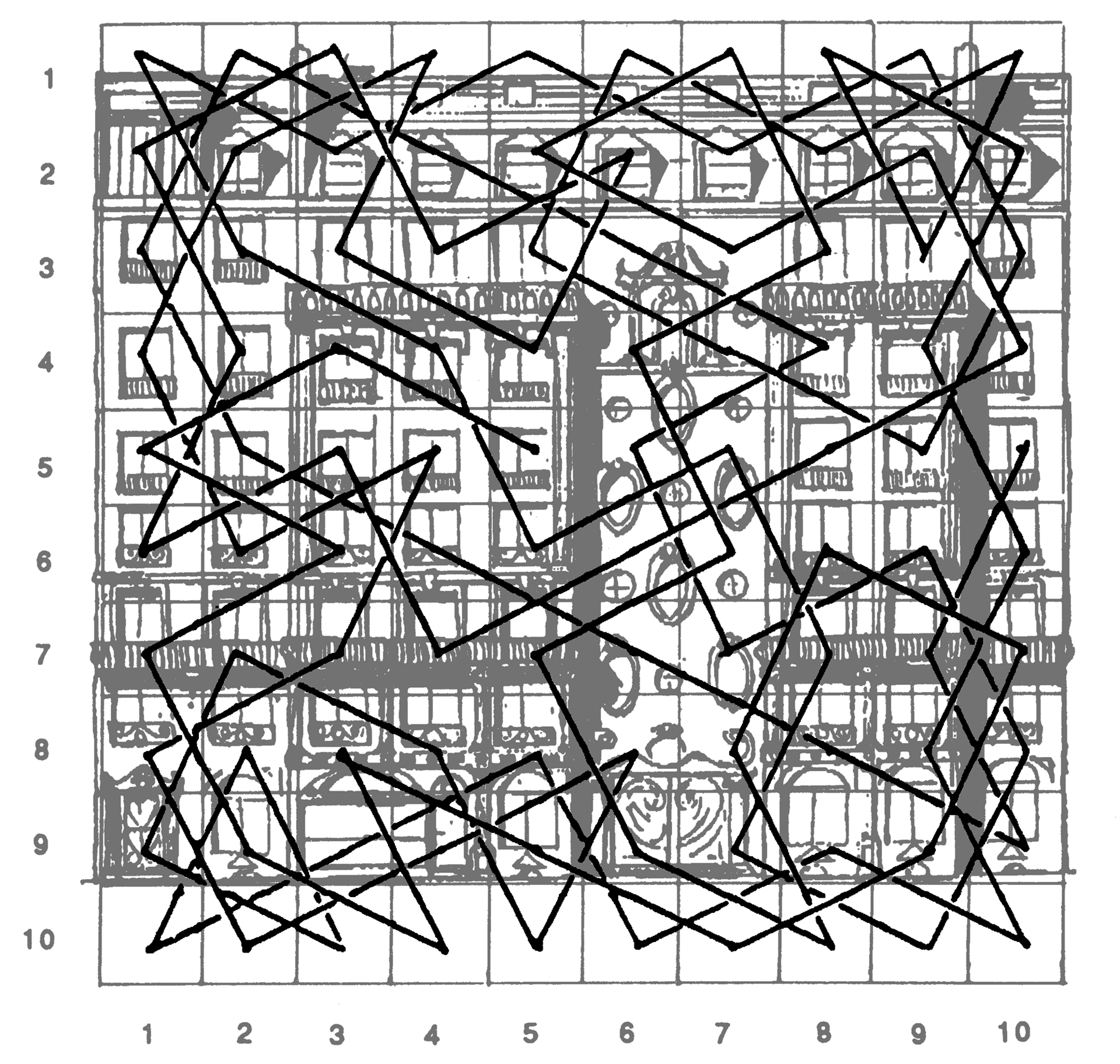
One constraint was Perec constructed the novel based on the Knight’s Tour within a chessboard: “The knight is placed on the empty board and, moving according to the rules of chess, must visit each square exactly once”. He divided the apartment block into a 10 X 10 grid and followed the Knights Tours from character to character, room to room, chapter to chapter.
‘Life: A User’s Manual (Ch. 51)’ by Georges Perec
from Intermittencies of the Mind
‘I have been reading Georges Perec’s Life: A User’s Manual for the last week. I have been taking it slowly and still have a little way to go but hope to finish in a day or so. It’s a fun book that can be maddening at times, and even dull every now and then (I find lists dull, there’s no way round it. Beckett also enjoyed lists and listing permutations of things, and it can be amusing in a way, but, at the same time…dull). But one list that is ‘not-dull’ comes about halfway through the book in chapter fifty-one.
‘Before I go any further I should point out to anyone who is unfamiliar with the book that it takes place at a specific point in time in a Parisian apartment block at 11 Rue Simon-Crubellier. We get to nose around in each apartment, see who is there and find out about their lives as well as the lives of the previous inhabitants; but the narrative is frozen in time—according to Wikipedia it is June 23, 1975, just before 8 pm; I haven’t seen this stated explicitly in the text yet but it can probably be inferred from the chronology at the back of the book. It is also worth noting that Perec was a member of the Oulipo group of writers who wrote inventive works using ‘constraints’ as a way to inspire their writing. As an example Perec wrote a novel without using the letter ‘e’ ( A Void in English).
‘So, back to Chapter fifty-one, and one of the characters, an artist called Valène, considers painting a picture of the apartment block, with the front removed and he will paint all the inhabitants of the building in situ, including himself. Perec then proceeds to create a list which we soon realise is a list of short descriptions of characters in the book so far and, as we don’t recognise all of them, characters who will appear in the rest of the book. Because the text used for the list is a monospaced typeface, possibly Courier, it is obvious that each list entry is the same length, which turns out to be sixty characters. We then notice that every ten entries are blocked together and there is a separator after 60 entries. There is another separator at 120 and another at 180….well, not quite, it ends at 179.
‘At this point it may be best to look at some images to see what I mean.
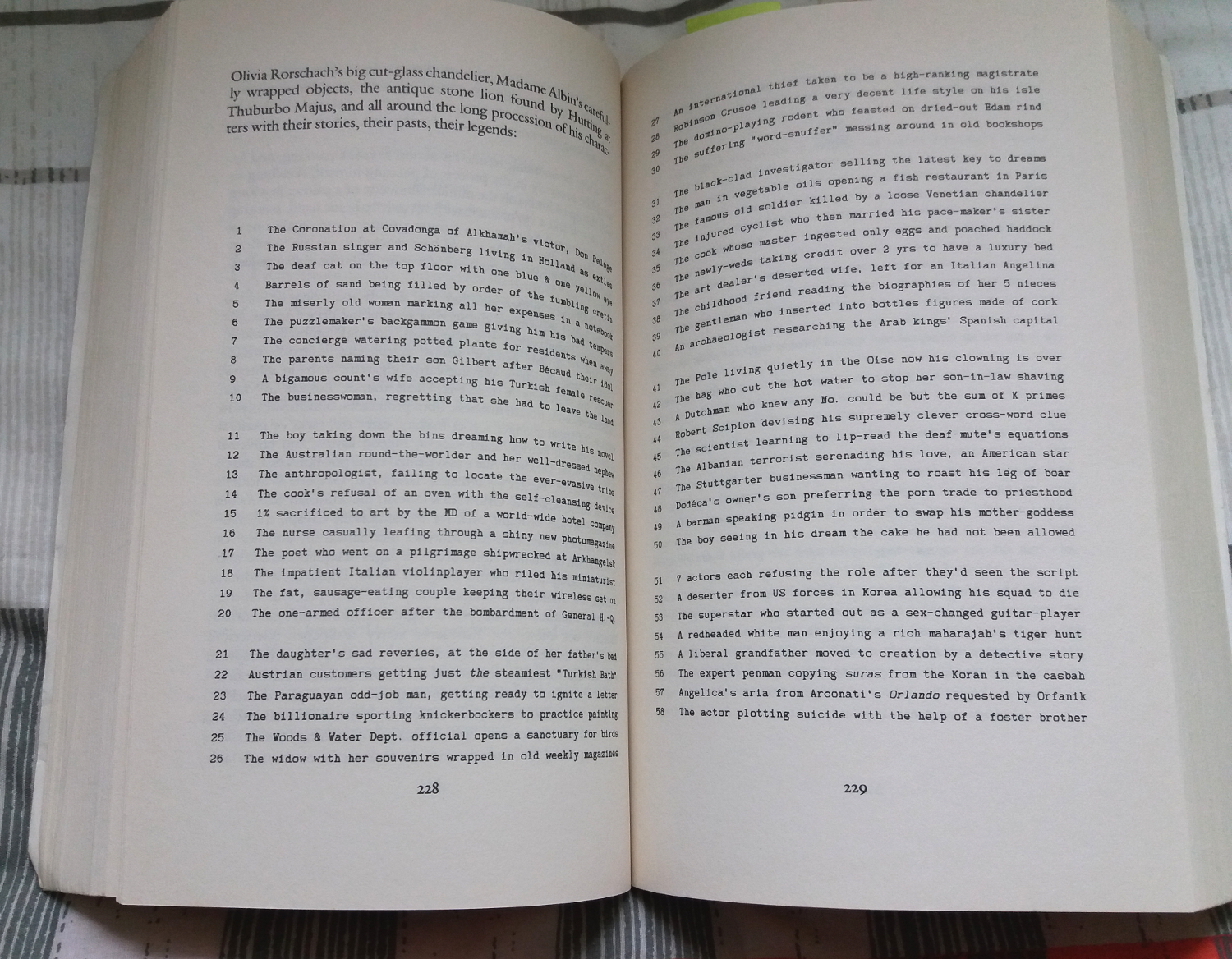
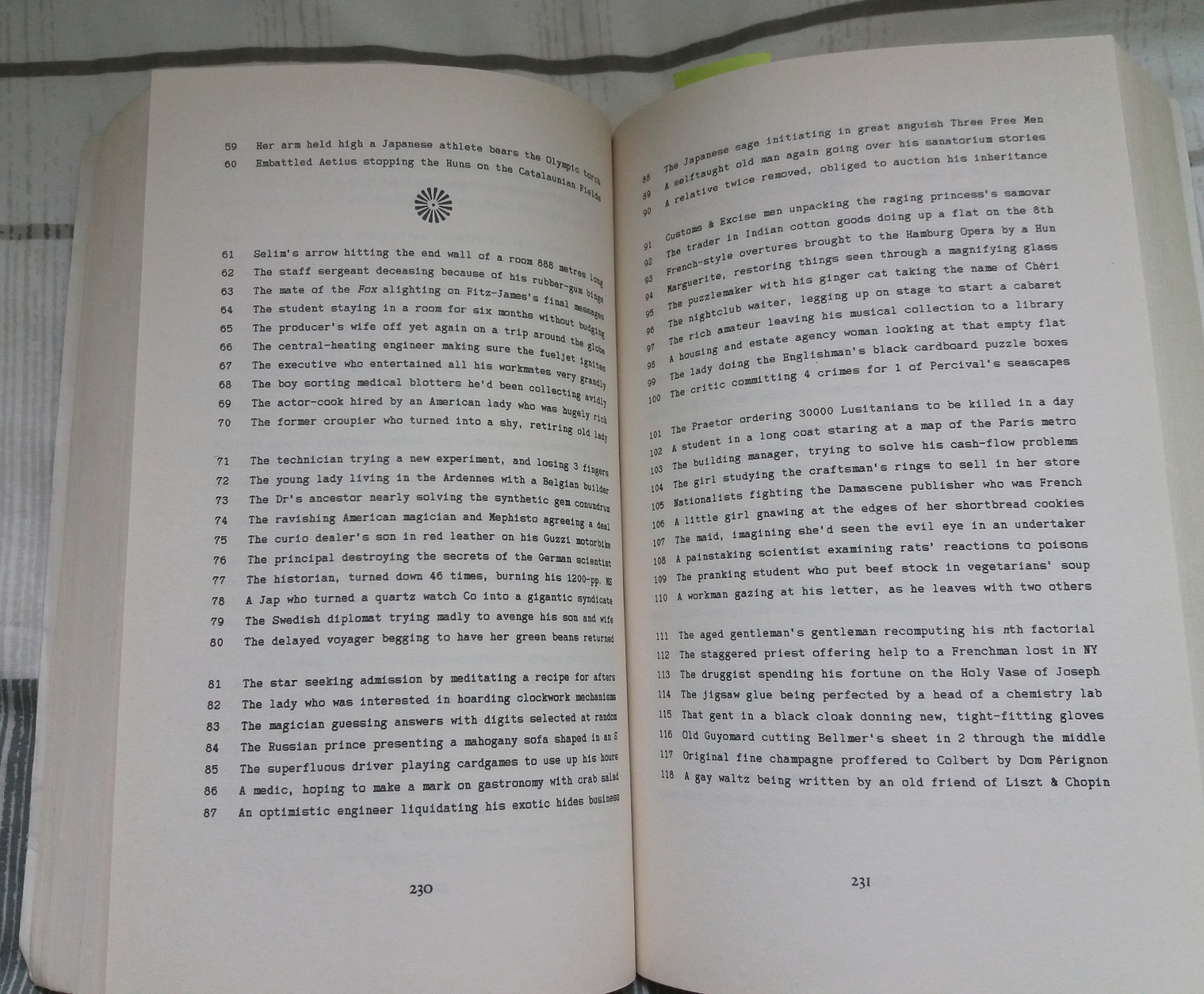
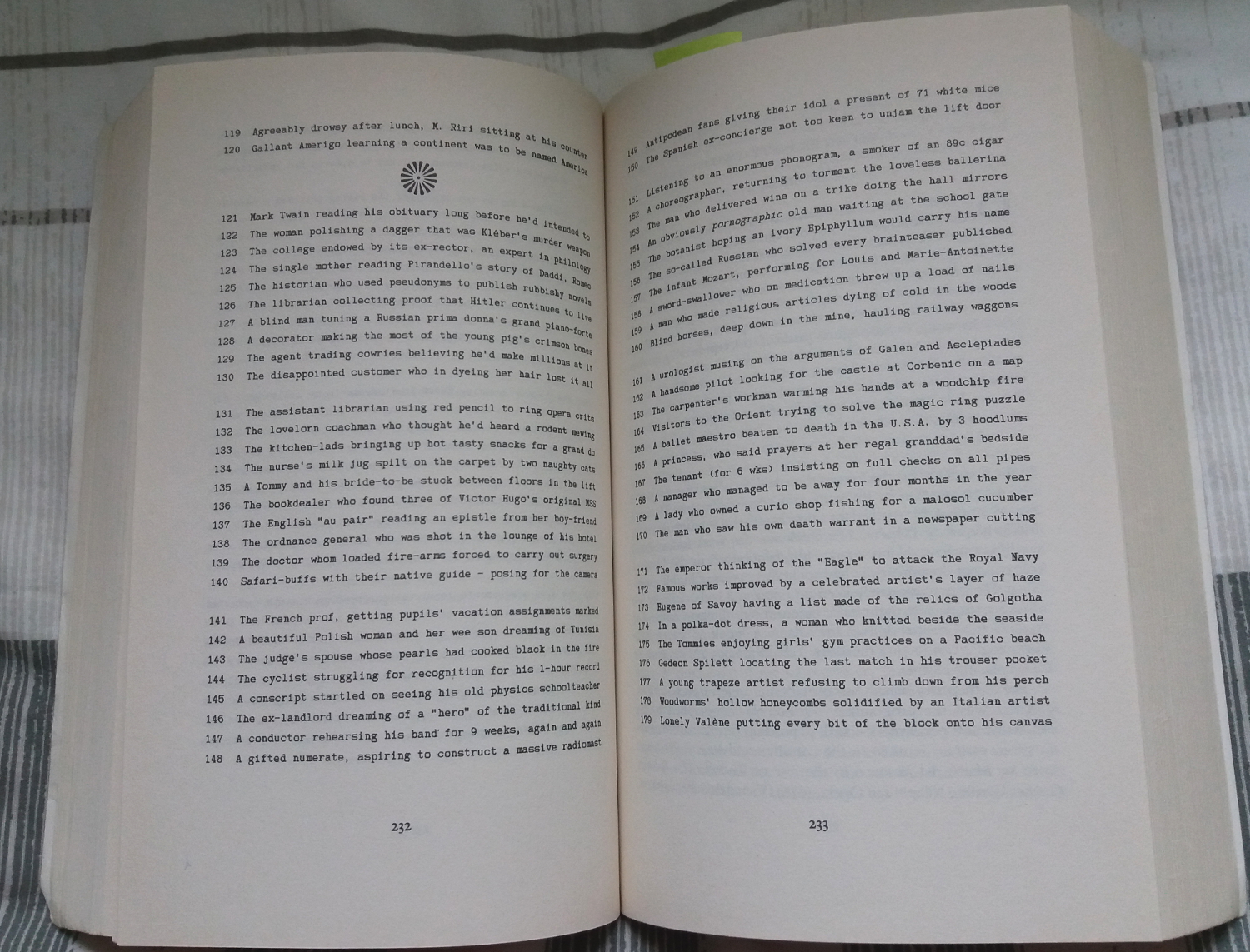
‘If you look on the second image you may be able to see that a diagonal line appears from top-right to bottom-left. This is formed because of a further pattern that Perec has used. Line 61 ends with the letter ‘g’, the second to last letter in line 62 is also ‘g’, the third from last letter in line 63 is also ‘g’ and so on until we get to line 120 which starts with ‘G’ thus forming a diagonal of ‘g’s. Now that we know that the second block has this pattern we can see if the first and third blocks also have this pattern. Although it’s not so obvious we can see that there is a similar diagonal of ‘e’s in lines 1-60 and a diagonal of ‘o’s in lines 121-179, which together spells ‘EGO’. Why? I’m not sure there is one other than playfulness.’
Wikipedia has a decent thumbnail explanation of the novel’s systems, and you can read it here.
____________
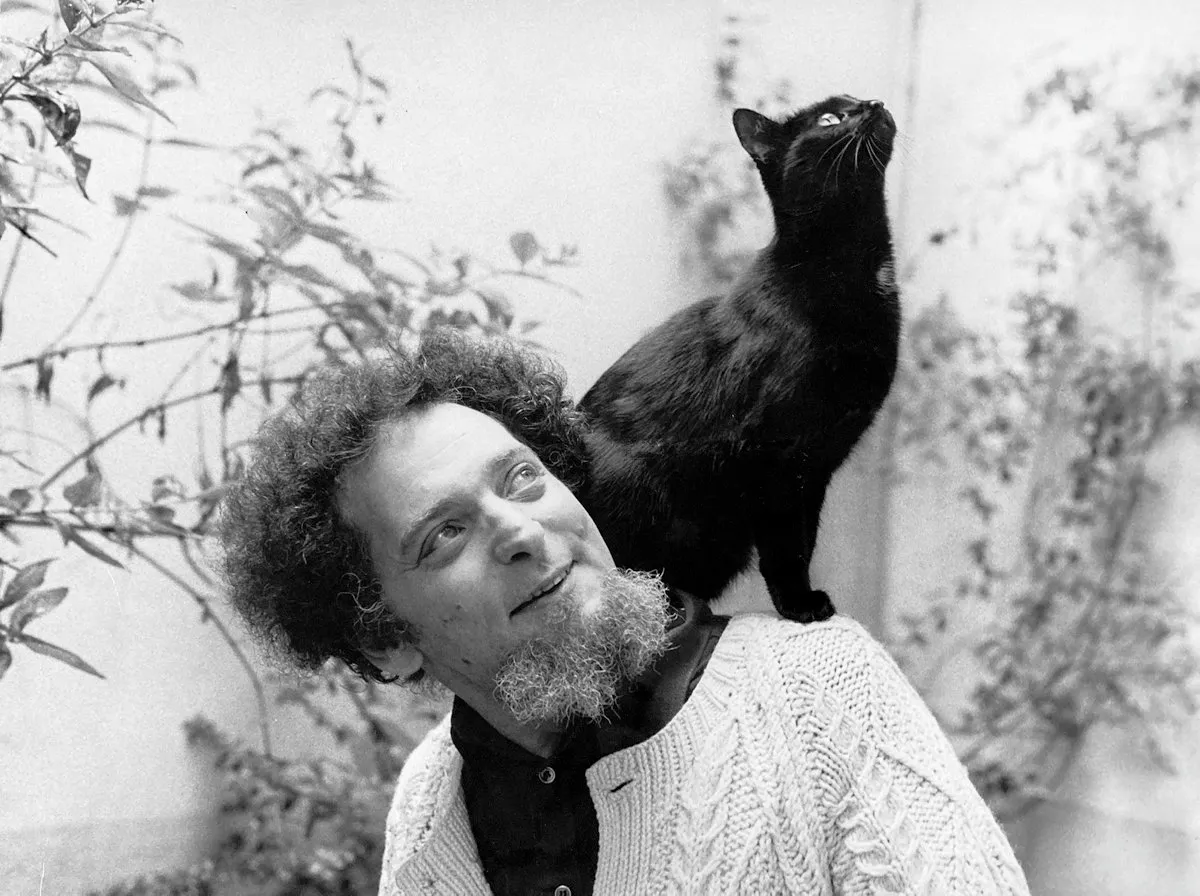
George Perec’s Last Healthy Days in Australia
by Joseph K.
In 1981 Jean-Michel Raynaud, then lecturer in French at the University of Queensland, invited Perec to Australia for two months, and later documented the writer’s stay in Pour un Perec, lettré, chiffré (Presses universitaires de Lille, 1987).
Throughout that September, Georges Perec was resident writer at the University of Queensland in Brisbane, where his duties consisted mainly in running a weekly Oulipian poetry workshop for students and staff. Perec had hoped that, while in Australia, he would be able to concentrate on Fifty-three Days, the novel that was still unfinished when he died; but progress was slow, as he found himself busier than expected.
October was spent giving lectures and interviews in Adelaide, Melbourne, Canberra and Sydney, some of which were duly recorded. Things, his first novel and the only one then available in English, was already on the syllabus of many universities and, as a result, Perec gave several lectures on this book. He also talked at length about poetic writing and the work of Oulipo. Unfortunately there is no trace of the lecture in English entitled “Fiction and Autobiography” that Perec was scheduled to give at Flinders University, Adelaide, on 2 October 1981.
A few days before Perec’s departure for Australia, Kaye Mortley recorded a long conversation with him in English in Paris for The Listening Room, an Australian literary radio programme. This proved to be the last formal interview of his life, as he died of cancer not long after his return to France. Here are three of Perec’s answers:

– ‘At the end of my life, I would like to have used all the words of the dictionary. That’s impossible. And not only to … use all of them but to create some. That’s my ambition. That’s why I write and how I write, at the same time.’
How do you situate yourself in relationship to your readers…?
– ‘I represent myself as something like a chess player playing [a game of chess] with the reader. I must convince him, or her, to read what I wrote, and he must begin the book and go until the end. If he doesn’t, I miss my aim.’
So you regard him as a sort of alter ego who reads, who is reading?
– ‘Not exactly… yes, at the end. But I mean during the process of reading, I consider him like a chess mate – somebody who is playing a part with me. The model for that kind of thing is the detective novel, all detective novels. When you read a detective novel, you don’t care really about who kills the victim and who is the murderer and… you care only about… you wonder why you don’t find. And it’s very interesting because in a novel you try to play with what is true, what is false, what to think, what to… – just to keep an aura of suspense, in a sense like Roland Barthes uses it. Something is suspendu – hanging – and it’s a way of dreaming, of going elsewhere through the process of fiction. What is most important in a novel, it’s… I could say it’s not written. It’s something which is… behind the words and which is never said.’
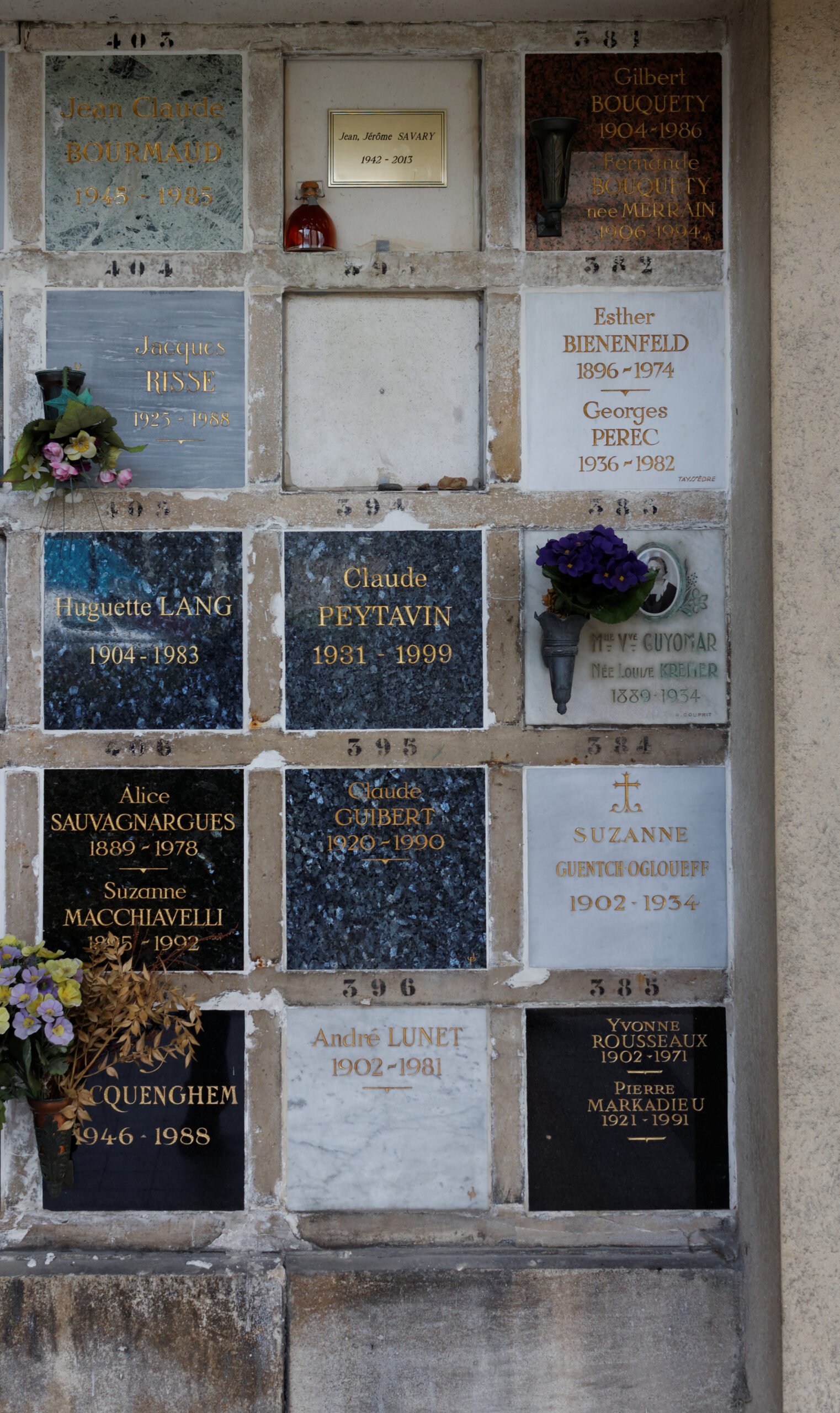
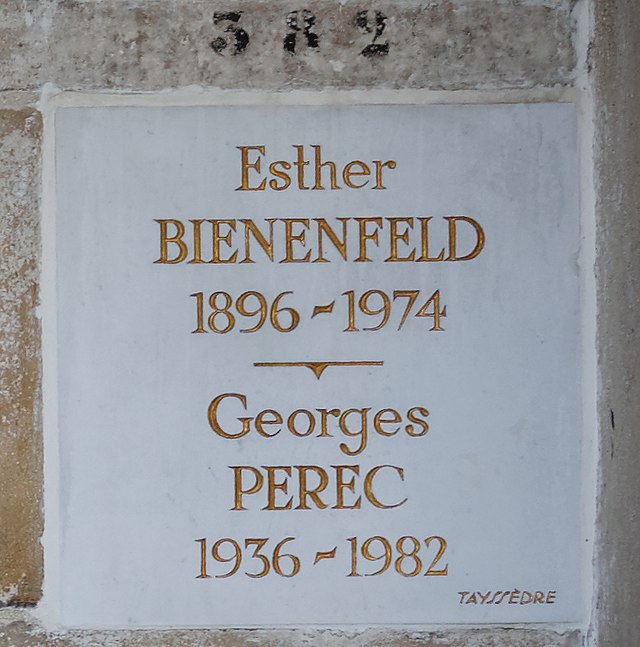
*
p.s. Hey. ** Dominik, Hi!!! Curious invention, yes? Natalie Cole? I haven’t thought about her in a million years. My mom loved her dad. Love me hate me help me, Save me from me, Hold me hurt me stop me, Take this love out me!, G. ** jay, Hey. ‘Audition’, nice pick. I don’t want to say ‘Salo’ because it’s so obvious and I don’t even like ‘Salo’, but it would be awfully smelly, so … ‘Resident Evil 7’ candle, wow, news to me. I’m going to poke around on eBay in a minute, and I’m not kidding. As I wish for only experiences of pleasure for you, I hereby thank Von Trier for assisting in the granting of that wish. Weekend of … ? ** Misanthrope, We always do, get through things. One of the assists of getting older is that you can remember things like the nuclear bomb scare and Vietnam and AIDS and whatever awful else and also remember that the world around you continued, battered but still in place. How much does a pack of ciggies cost in VA these days? My weekend looks to be both chill and chilly. Yours too to some degree, I assume. ** HaRpEr, It’s good to get hung up on that stuff temporarily. It’s good to have a clear idea of what you and your work have to deal with. The trick is just to not overrate and empower that stuff, basically. You know. ** _Black_Acrylic, I heard about that storm, jeez, don’t forget to buckle up. It doesn’t seem to be barreling our way, but the French weather predictors are legendarily 75% always wrong. Are the skies quelled now? ** Steeqhen, I wish someone would invent … what would it be called … Hear-o-hearing? Where you could hear the actual sounds of the filming of the movie you’re watching, the stuff that gets erased in post-production — the footsteps and mumbling of the crew, the clanking of the equipment, the sound of the fans blowing the ‘wind’, etc. I think the only ‘disasters’ I’ve ever had to deal with were earthquakes. They’re scary, but they usually only last for thirty or forty seconds, which is nice because you get the scare and then the relief in one batch. You can’t sleep through those, although I guess people do. When I see the words ‘Doctor Who’ I only picture that kind of ornate robot or whatever it is and a phone booth that I think is like an elevator or something? Did you get your writings finished and submitted? Hope so. ** PL, Thank you. There’s a 4D movie theater here. I only went there to see that last ‘Godzilla’ movie. It was weak sauce but kind of funnish, I guess. On a first, quick scroll-through, those new artworks by you are really great! I’ll need to pore over them, but, yeah, I can see the growth from the earlier work of yours I saw. And I’ll see if I can find the ‘Sluts’ thingeroony. Congrats! Awesome work! Everyone, Highly recommended that you poke this link and go look at some new drawings by the wonderfully exploding artist PL. Thanks so much for sharing that. I’m already jonesing to delve. ** Steve, Hey. Weekend: The plan had been to make the teaser trailer for ‘Room Temperature’, but it looks like that’s not going to happen so quickly. The Pompidou is hosting a Frederick Wiseman retrospective, and they’re showing a film of his that I’ve never seen, ‘Public Housing’ with him in attendance, so I might see that. Tomorrow is my biweekly Zoom book/film club, this time discussing Errol Morris’s ‘Gates of Heaven’ and Madison Murray’s book ‘My Gaping Masshole’. Stuff like that. I’ve heard about ‘Grand Theft Hamlet’, and what a swell idea. How was it? I guess my question would be has Spin returned to being a magazine that there is any good reason to read? I hope your parents’ phone is back on the hook. Everyone, Steve has a triple-header of reviews he wrote that you can read and inform yourself via. He reviews Michael Roemer’s 1982 PILGRIM’S FAREWELL here. He reviews Steven Soderbergh’s PRESENCE here. And he reviews a Liza Minnelli documentary here. ** Lucas, I fully agree that 2025 will be your starring vehicle. Well, you see what variety there can be with posts here, structure-wise and build-wise, so anything that works for you will be just fine. You sound better, excellent. My Friday was pretty nothing-ish, I think, because I can’t really remember it distinctly. Have the finest weekend! ** James, Physics, yeah, I think I got a D in Physics back in school. Sometimes the steady, predetermined path is the best one. Apparently IKEA’s food court serves very good Swedish meatballs. Apparently even Swedish people rave about them. I wouldn’t know. They smell yuck. Breakfast in America is fun, at least if you’re an actual American. Iced tea! Chocolate milkshakes! Mozzarella sticks! The decor is a little too ‘Happy Days’ but you can’t have everything. Oh, I love Antiques Roadshow. I don’t know what that reveals about me. Oops, but anyone who calls you a dumbass is obviously unqualified to make that assessment. May you return with plenty of cut slack to bolster you. ** Diesel Clementine, Oh, okay, sorry for the preemptive congrats, but congrats on submitting it, and hopefully whoever decides will be sufficiently smart and have sufficiently excellent taste that I will be able to congratulate you without qualifications the next time the subject arises. You’re in the storm too, or were. We’re all dead still and merely moist here. Knock on wood, I guess? So keep your psychic projection handy and watch the news for a possible Paris assault. What is your husband’s job? Sorry if you or he already said and my brain is malfunctioning. ** Larst, I’m gonna hit the live show up this weekend. I don’t think they’re streaming ‘Eno’ over here, which sucks. You sound like you’re maxing out what the world has to offer you indeed! Well, and what you have to offer yourself, more importantly. ** Justin D, Hey, hey. You just made me imagine an advanced version of Scratch-n-Sniff where you could scratch the actual words in the text and something would waft up. Like even ‘the’ would exude something, fuck knows what. Anyway, thank you for the reverie, and I agree. I laid my potential weekend out somewhere above. Pretty tentative. You, yours? Thank you for the song. I’ll investigate it imminently. You keep finding new artists for me, and you know how hungry I am. xoxo. ** Okay. This weekend I give you a kind of hodge-podgy but well intentioned post about the great, great Georges Perec. See you on Monday.




 Now available in North America
Now available in North America 
Nazis are bad. That first GIF foregrounds how cool it is that so many little things in writing can change so many meanings so much. Cancer is bad, too. There is an unfortunate streak of coincidence(?) when it comes to brilliant writers croaking before their time. The Oulipo! I would have loved to be a member of it, or any literary collective. Love the head on the table. I love crosswords and really do wonder how they’re made, like, they’ve got to be way more complicated to make than solve. Cruciverbalist is an awesome word. Such fantastic hair. The pater knows Perec, he brought up the apartments before I got to this point of the post. A Void is impossibly impressive, as is the translation. Can’t read it without trying to look for an e so you can go AHA HE SLIPPED UP but he doesn’t. I hate numbers and maths but reading them is weirdly engaging for me, in a good way. I have written some very short lipograms before. Paraliterary monsters, niiiiiice. I love such highly structured novels. Oh my God, the diagonal line of Gs, cooool. So clever. And a cat! A lovely post.
Hihi. Physics was mushed with the other sciences for my GCSEs but I somehow scraped an A. Steadiness is comforting, and predetermination removes the burdensome implications of freedom. Thinking of the Frost poem about the two roads.
IKEA’s food court is pretty incredible. The meatballs are to my handicapped palate scrumptious, and my mother has lauded the reasonable pricing of it all. I don’t think I’ve ever met or interacted with a Swede, though last night and a few minutes ago I have struck up a correspondence with a Colombian for the first time.
America’s cultural dominance is a little depressing to consider. Happy Days was ye olde sitcom, no? I think vanilla milkshakes are the best, flavour-wise. Place called Byron, think it used to be in Leicester? Not sure if it’s still there, did great burgers and just the absolute best malted vanilla milkshake. Ugh, I thirst for it. Mozzarella is probably my favourite cheese, and mozzarella sticks are of course yummy, if prone to ungodly levels of heat.
Your fondness for Antiques Roadshow isn’t offensive to me considering you bear no power over what television is watched in my house, whilst my mother forces it on by diktat. It’s amusing enough when someone spends a bunch of money on something only to find out that it’s worth bugger all, poor sods.
Mm, oops indeed, but mocks don’t matter. Dumbassery is subjective, possibly. There are different forms it can take. I have yet to be called a dumbass. The closest I’ve heard to that was probably faggot, from my friend yesterday. Hopefully I can continue to dodge the dumbass accusations.
I return with an underwhelming amount of sleep (only, like, 7 hours, when on a school night I’ll get like 5 or 6) and as predicted, more stubble, which I am only going to let increase until I have what will hopefully be an incredibly satisfying shave tomorrow night before bed. I’m going to cut my self some slack today by doing very, very little. I need to respond to emails, which I started before falling asleep. Till Monday, post-history and tea-drinking.
Hi Dennis! This is someone I primarily know via Edouard Levé, but it’s super interesting to see the “original” that the novels I like so much are based on. Translating “A Void” must have been an interesting exercise, although I think I’ll probably stick to reading the original when my French improves a little.
“Saló” is a good pick, it’d definitely be a good proof of concept. Yeah, the “RE7” candle is so cool, I always really like these wellness tools (like scented candles) being repurposed into anti-wellness tools – I wonder if there’s a site online that sells crystals that are designed to cause anxiety or shorten lifespans.
My weekend is minimal – the study I’m running should be starting soon, so I just have to keep my eyes on that. So, it’s probably going to be mostly spreadsheets with the new FKA Twigs album, so I’ll definitely keep Mr Perec in mind for that. I’ll probably try and see my boyfriend too – he’s expressed an interest in seeing Takashi Miike’s “Visitor Q”, which should be fun. I hope your weekend is excellent, and hopefully exactly as stormy as you want it to be.
P.S., James, I totally flubbed my mocks, and still did well on my final exams. I think they’re just there to scare you a bit. I hope you manage to relax a little this weekend, best wishes!
P.P.S., Steeqhen. “Essential Writings” has the chapter on Taboo/Transgression, which is maybe the one I’d pick out (as a Bataille layperson). I will eagerly await the third season of RHoNY, and I agree about Simon/Alex. Simon does seem to be a bit of a self-styled libertine, so being a swinger wouldn’t surprise me.
I see, I will find a pdf of “Not All Diamonds and Rose” to flip through. Yeah, I don’t get the feeling the RHoNY people would cope super well with Covid, or any complex topic, but I imagine that should be interesting to witness at least. I can 100% see that about the show and S&TC, from my limited knowledge of that show, so, I will keep you updated!
Thanks, D. I’ll be waiting for your feedback 🙂
Hey Dennis,
Hear-o-hearing sounds like an interesting centerpiece for a film about film-making; i love a lot of films that are almost commentaries on the industry (Mulholland Drive / Inland Empire, Sunset Boulevard, Singing in the Rain) that I think a film that gave you the ability to hear behind the cameras could be interesting. It’s even giving me an idea for a short film that is just a regular film being made, but the real story is taking place between the set crew that you hear in passing.
Ya ‘The Daleks’, it’s pretty crazy how they were designed in 1963, and yet over 60 years they haven’t really been changed. Instead, random pieces of their design have been repurposed, which I think is a testament to how well designed they were. And that box was a Police Box which was commonplace in the UK in the 60s and was meant to be the space ship camouflaged, but now it’s become something way more synonymous with Doctor Who and the ‘Tardis’ than with the thing it was meant to be mimicking.
I ended up finding this story I wrote when I was 19, which was a good basis but frankly was just me describing the emotion and thought process of the character; just pages of over explaining the theme. I was able to cut it down from 2000 words to about 1000, but make it (in my opinion) a lot more interesting. Plus I submitted two poems (one in a 4 line stanza format, one as prose poetry), and another story i did in my creative writing class, but right now I would rather that aforementioned reworked story by chosen.
P.S. *jay
Yeah I think that chapter has a lot of marks and sticky notes for me to take down. Im almost finished reading that book in its entirety, but idk if i’ll find any more quotes towards the back that will be useful.
Simon is 100% a libertine, the fact they named their children François and Johan even though they’re Australian/American is hilarious to me. season 3 is incredible, so many insane things happen. Get ready for Bethenny’s life flipping, Ramona saying some of the nastiest things yet, Luann starting her music career, and everything that ‘Scary Island’ entails: Johan Face, Al Sharpton, Cook vs Chef fights, Hooter Girls, Turtle Time, crying whilst getting massages, and Kelly Bensimon having, from her own words, “not a breakdown, but a breakthrough”
Also regarding what “the” would smell like, I feel like it would somehow act as some sort of enhancer smell; it would smell like nothing until something else is scratched, and would then make that smell thrice as strong.
Hi!!
Every quote and reference I read from or about Georges Perec makes me think he must have been an exceptional thinker and user of language, yet I’ve never read any of his books. Maybe I find the sheer scope and richness of his work a bit intimidating – I’m not sure. Do you have any tips on what would be a good starting point?
Ah, yes, Love Out Me! I like this song a lot! Sucker love is heaven sent, you pucker up, our passion’s spent, my heart’s a tart, your body’s rent, my body’s broken, yours is bent, Od.
Georges Perec is someone I’m aware of via his adventures in removing letters. It’s a great thing to see more of his backstory here.
The last episode of my show is online here via Tak Tent Radio!
Ben ‘Jack Your Body’ Robinson brings you the final Play Therapy v2.0. We’ve met before, haven’t we.
Hey, how are you? My weekend was crappy but not too bad. I started working on the Phil Ochs post and I may be getting a little carried away. How long is too long for a post? It’s really fun making it. It’s most likely not going to be the last I make if you like how it turns out. I’ll email it to you over the next few days, probably. I have a bunch of things to do, as in a reading group I’m going to tomorrow, planning an information stand and stuff. I’m excited about that since I’ve been so bored recently. Anything fun to do next week on your end? xo.
I haven’t seen the magazine, which has only published one issue so far, but Spin’s website is so dire. They ran an article about the awfulness of music critics are by a butthurt Eminem fan (weird how touchy they are about criticism when Em’s career is based on promoting himself by trying to offend people), which turned into an ad for his crypto platform in the final sentence. But I’ve pitched them several album reviews, so I hope their editor’s not reading this! If they asked you, would you go back to writing for them?
GRAND THEFT HAMLET is very entertaining. It puts a new spin on the “hey kids, let’s put on a show” narrative. If the actors were performing in community theater instead, they would never have access to the spaces they can use inside GTA. The incongruity of other players walking up and shooting someone while reciting HAMLET is pretty amusing.
My parents don’t really watch TV anymore, but they too loved ANTIQUES ROADSHOW.
Lincoln Center begins an extensive Wiseman retrospective next Friday, running through the whole of February. I want to catch 4 or 5 films, including PUBLIC HOUSING. there.
R is a hospital porter ! He wheels the patients around – but also sometimes works outside in the hospital bins – chucking away bags of body parts – that’s unfortunately where he was on Friday during the storm – I’m playing N (me and r’s boyfriend)’s game cube – made a gorgeous skater boy with a gimp mask and a very tiny waist – (oh yeah what was that game cube horror game you talked about on a podcast once ? Me and N wanna try and get a copy) – I’m waiting on a taxi to go to a pres to go see FKA twigs at a club night – expecting a very gorgeous night – wearing; grey suit trousers, strap on harness, green and black mesh top, grey suit jacket and anti facial recognition make-up – forgot my perfume when I left to go to N’s – the boys aren’t coming, they’re just staying in, getting stoned, playing tony hawk and probably sucking each other off – I trust Paris hasn’t blown away over the weekend ! Did you get up to much ? I hope it was fabulous!
Hey! Funnily enough, I had a lecture on Oulipo the other day, and our assignment was to write some poems with constraints. One of the things I’m doing is re-writing a poem I already wrote but without T,H, or E.
So:
A thin black gown is draped around it, concealing approximately half of the thing, the rest is flat upon the boards, with certain crevices layering the cloth into a wave. The gown is identical to the one covering Salome in Aubrey Beardsley’s illustrations.
Becomes:
A slim black gown sprawls across Z, burying a boundary of our companion, a surplus lump sprawling across an oak board, and a small scrap of furrows, coiling Z’s fabric, forming an aqua display. Z’s gown mirrors a garb of a biblical lady, offspring of a king, in an ink drawing by a famous and sickly London dandy.
I’m also writing a poem without nouns and adjectives.
Perec is the best. I get so happy and inspired just thinking about him. That lipogram version of Rimbaud’s ‘Voyelles’ is amazing.
I’ve been listening to the new FKA twigs album a lot this weekend. I don’t know if you’re a fan but I’m really liking it. It’s getting a lot of comparisons to 90s trip-hop and IDM, but not in an overly nostalgic way. It’s genuinely glitchy and disorientating at times. Anyway, I recommend it if you haven’t heard it.
My weekend was pretty normal, but the storm has very much made it to London, unfortunately. I got around to finally watching ‘Celine and Julie’ go boating and loved it. Very much my thing, and Jacques Rivette is a new favourite. I watched ‘Out 1’ and ‘Duelle’ in the summer and haven’t been disappointed yet. Also, I love Juliet Berto so I want to check out her other films. How are you, D?
And oh lord, I’m lipogram crazy. It is actually difficult to jot down a particular symbol at this point. I think in lipograms now.
So I gift to you a bit of:
‘A Burning Stint’
Far back, if I can think straight, my world was a party at which all passion was broadcast, and all intoxicating fluids did flow.
On a particular night I sat attraction on my lap — And I found this lady acrid, and I spat insults.
I fought a war against iniquity.
I ran. O Wiccan hags, O anguish, O loathing, it was you who said you would harbour my gold!
I was fit to kill in my mind all human hope. Upon all joy, so I could rob it of air, I would sound the dumb bound of wild animals.
I brought the punishing folk so I could suck on gun-butts as I quit this mortal coil. I brought afflictions so I could drown in sand and blood. Bad luck was my god. I laid back in a pool of mud. I got dry again in an air of criminality. And I lay down a worthy trick on insanity.
And with spring, I was making an idiot’s disgusting laugh.
But not long ago, finding that I’m on the point of issuing my last croak, I thought of looking for a path to that old party, and possibly down that way I may find my thirst again.
Charity is this path — This inspiration shows that I was dozing!
‘You’ll go on as a carnivora, and so on….’ howls indignantly an incubus who crowns my scalp with such calming plants. ‘Pass away with all of your cravings, your lack of caring, and all fatal sins.’
Ah! I brang too many — But my darling Satan, I call on you, forgo your burning look! And as me and you stand by for a tiny handful of tardy cowardly actions, you, who honor in a wordsmith a lack of any vivid or didactic ability, for you I rip out this stack of disgusting accounts from a diary of a lost soul.
Ah shit, there’s an e at the end, replace it in your mind with ‘both of us’
Testing??
maybe the comment isn’t sending because I wrote too much?
Oh wow that’s totally what it was pshh. Note to self no copy and pasting or else it’s perceived as spam I suppose
So I guess I’m going to have to write this entire thing so the browser doesn’t take it as spam
Sweet! How fun! (-.-)
Ofc I’m going to shorten it because at this point if I’m manually writing it I might as well just write a whole new comment.
Aghhhh or maybe I can just record it like spoken word through my phone. I might actually do that.
1-26-25
This comment is 3 days old irrelevant but I refuse to delete it out of spite. My apologies if this is confusing. I would hate to delete this because I had a lot of positive energy put into it and to abandon it to whatever was going on at the other end would be a crime.
I’ll add dates to provide clarity
1-23-25
Had a great day no bad thoughts not one. I’ve been reading David Foster Wallace, just listening to him. He puts things nicely.
Doesn’t know why it took me so long to get into him. Sherlock the things that you said about due to unfortunate circumstances but I guess the best thing I can do is because of myself and realize why things have taken so long in the first place.
1-22-25
This was in response to your black sunlight post below.
What a likely coincidence. Just the other day I was reminded when you mentioned this book to me and I was straining to remember the author.
It snowed!!! You’ll never believe it but it’s been at least 4 years since it snowed. We live in a semi coastal area so snow is pretty much rarity. It’s beautiful and I bet the beaches look stunning
Sorry if it sounds like I’m boasting one of the greatest things is knowing that blue velvet was filmed here in Wilmington in that David Lynch considered small towns are such to be the greatest setting for such film. Although the movie takes place in Lumberton which is a more rougher part of NC
We saw blue velvet at our theater after the preview some crew members talk about their experience filming as well as meeting Lynch. Another cool thing that we got to see one of the prop ear. I don’t think it was the exact one in the film but it was cool and nonetheless
(Present me, im cutting out the part where I talk about Bob Dylan because it’s cringe)
God that must’ve absolutely sucked maybe enough to give entirely when you lost your novel. was it one that was eventually published? I don’t know how I’ve kept all my composition journals containing sections of my book from being lost into some obscure void I’ve held on to them since I was 16 and in it are some crudely drawn but purposeful sketches but I want to put into the novel.
I’m going to try to go this techno/drag show event on Friday because I haven’t gone to an outing in a bit and I hate outings
I’ve been to this place before it’s a hookah bar and just kind of weird and stuff fun.
I’ve never been to a drag show which I guess I’ll go just to confront my stubborn belief that they aren’t my style, which is probably not true but I’ll find out (I found out.)
So this music Duo called labyrinth Ear that you may or may not know, they’re incredible and you should totally bless your ears with this amazing ethereal synth track.
Or not it’s up to you but you probably miss out if you didn’t. It sounds good on public transport.
https://www.youtube.com/watch?v=z_1ECIIEqhk
Sending it separately because I didn’t want it to mess the comment up again
Peace 🕊️ sorry for all the comments
I’m trying to figure out what the Sherlock was a typo for . Odd that one.
I think it was supposed to say “there’s alot of things I can say that about but all I can do is be kind to myself”
I hate speaking into phones. I’m probably gonna need a week break after this very grueling comment.
Omg I don’t even have my cool avatar
Ok it’s back!
Hi Dennis! Yes, I’ve seen that Joe Brainard/Levé connection before, so I’ll look into his work. All I know is the super rigid structure his memoir follows so, very much in the Perec mode too. Actually, on that anti-wellness thing you mentioned, of crystals/accupuncture that do harm is actually the concept behind one Chuck Palahniuk short story/novella that I remember quite liking – called “Foot Work”. As far as I can remember it was about two women who practice aroma therapy and reflexology as a way to discreetly perform political assassination – like, giving someone suicidal ideation or cancer via wellness mumbo-jumbo. I think the fear of god/gods is maybe one thing that should actively be taken OUT of the alt medicine crowd, but that’s just me.
The FKA Twigs was actually really good, mostly. It’s unfortunately not strangely produced in a way that’s easy to cut apart for playlists, like most slightly bipolar albums – the parts of the album I find a little irritating are quite deep into the songs (quite traditional pop-ish music) that I like the most, but I’m looking forward to them growing on me a little. If I had to pick a personal favourite, it’d probably be “Drums of Death”, it’s got these very Arca-ish vocals with a really IDM thousand-hits-per-second drum machine filter applied to everything.
The storm was so, so amazing here – I got in a hailstorm this morning, and that was really amazing, I ended up being really awkwardly late for my lecture because of how nice the sensation was. The winds were really strong too, it was unbelievably nice from the outside. I hope the storm manages to avoid you, or at least the winds and rain avoid you, and you just get the cool sights and sounds.
P.S. Steeqhen, I am looking forward to that, thank you for the hopefully deja-vu inducing shrapnel for the later parts of the season. I’m near the end of Season 2, so I’m sure those should be hitting me soon!